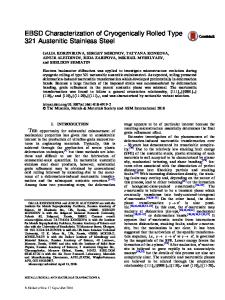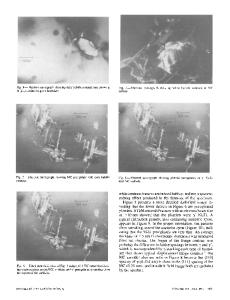Dissolution kinetics of NbC particles in the heat-affected zone of type 347 austenitic stainless steel
- PDF / 3,698,053 Bytes
- 12 Pages / 612 x 792 pts (letter) Page_size
- 50 Downloads / 316 Views
I. INTRODUCTION
HOT cracking in the weld heat-affected zone (HAZ) due to grain boundary liquation is commonly observed in austenitic stainless steels, heat-treatable nickel-based superalloys, heat-treatable aluminum alloys, and some titanium alloys. There are two types of liquation cracking in welding: one the result of microsegregation of trace solute elements that promote the formation of low-melting constituents, often in the form of films at grain boundaries,[1] and the other is the result of an eutectic-like reaction around a dissolving particle during nonequilibrium heating, generally referred to as “constitutional liquation.”[2,3] The major difference between the two types of liquation cracking is that the former generally occurs in single-phase alloys and the latter in multiphase alloys. The constitutional liquation mechanism involves the melting of second-phase compounds in a region of the HAZ that is rapidly heated to near solidus temperatures. Because of the rapid heating rates, complete dissolution of the compounds does not occur instantaneously above their solvus temperatures. The remaining compounds undergo a eutecticlike liquation reaction with the surrounding matrix, which is rich with the dissolved species. The liquation temperature is below the solidus of the bulk alloy, and the liquid phase resulted from the liquation reaction wets the boundaries of the still solid grains; a situation that may lead to intergranular cracking if tensile strain is present. Pepe and Savage[2] indicated that constitutional liquation, which occurs under nonequilibrium heating in the weld HAZ, could thus depress the effective solidus. Incomplete dissolution of second-phase particles was believed to be an important condition for constitutional liquation to occur.[2,3,4] There have been numerous studies of the constitutional liquation phenomenon and associated cracking,[5–10] with one study of the theoretical analysis and calculation of the LEIJUN LI, Assistant Professor in Manufacturing, is with the Department of Industrial Technology, University of Northern Iowa, Cedar Falls, IA 50614. Contact e-mail: [email protected] ROBERT W. MESSLER, Jr., Associate Dean, is with the Materials Science and Engineering Department, Rensselaer Polytechnic Institute, Troy, NJ 12180. Manuscript submitted April 19, 2001. METALLURGICAL AND MATERIALS TRANSACTIONS A
kinetics of NbC particle dissolution during welding.[11] However, there are only a few studies on microstructural revolution and particle dissolution during welding of low alloy steels.[12–15] There is only one published experimental study on the dissolution of second-phase particles in austenitic stainless steel under rapid welding thermal cycles.[16] The lack of experimental data on kinetics, as important as it is said to be, seems to be attributable to the labor-intensive experimental procedure for sample preparation and lack of efficient, quantitative metallographic analysis methods for large numbers of samples. Recent advances in digital-image analysis technology have made i
Data Loading...











